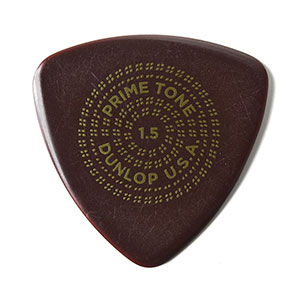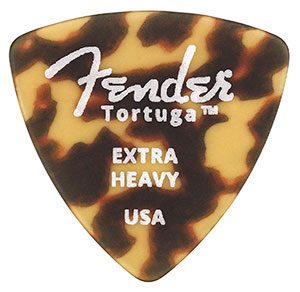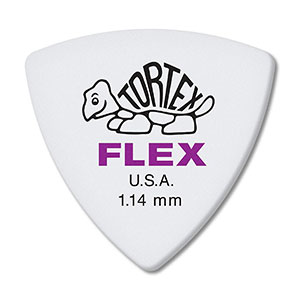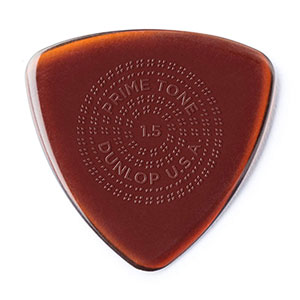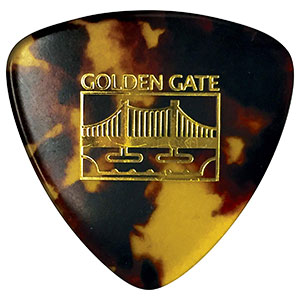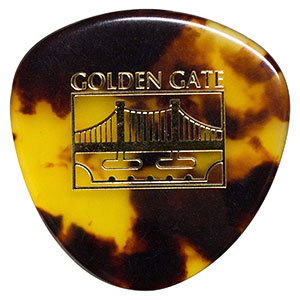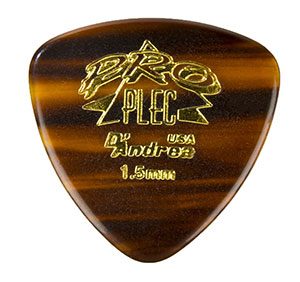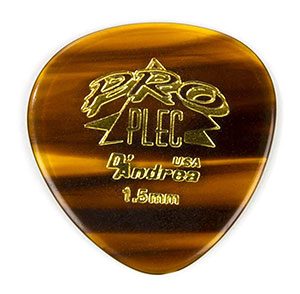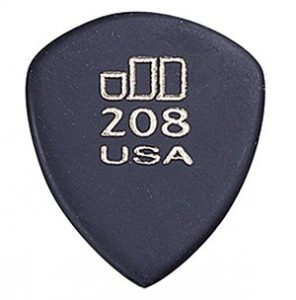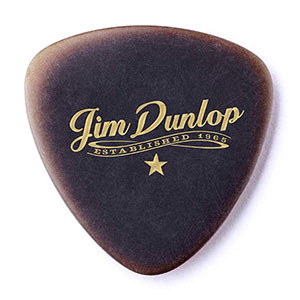Pickers will tell you, their choice of guitar flatpicks are largely a matter of personal preference. Like the guitar itself or your choice of capo, musicians usually go with what feels best for their personal style of playing and the tonality of their particular instrument. In this post, I’ll go over a few of my thoughts on picks and specifically which picks are best for the bluegrass flatpicking guitarist.
(Disclosure: Some of the links below are affiliate links, meaning, at no additional cost to you, I’ll earn a commission if you click through and make a purchase.)
There are a few considerations you should make when selecting a flatpick including the feel of the pick in your hand, the shape, size and thickness of the pick, the attack, the tonality (what it actually sounds like) and of course cost.
Pick Size and Shape
When I first started playing guitar, I often used what was laying around the house. My dad who was a professional musician, would use white standard heavy Fender picks. He preferred them because they had the right feel and the white color made them visible against the dark stage if you dropped one. Later on, I went to more of a smooth triangle shaped pick which I still use. I feel that you can get better feel when the pick is slightly larger. This may not be true for all pickers, for example Steve Kaufman and Peter Rowan prefer a standard shaped pick.
Pick Thickness
Over the years, I have also moved to a thicker pick, usually 1.55mm or thicker. A thicker pick can provide greater dexterity and feel because there is more of the actual pick to hold on to. For years, I used a Dunlop 208 which is a thicker, jazz style pick. I loved the feel and the warmer tone I get from it out of my Martin HD-28V. I still keep a few of these in my guitar case as backups. I currently use a 1.5mm Dunlop Primetone smooth triangle, but I am always experimenting with picks so that could change over time.
The Cream of the Crop
Years ago, it was standard to use tortoise shell picks. The glassy finish and durability made them a favorite among the old timers. In fact, Tony Rice would take tortoise shell blanks and create his own picks that were the exact thickness and size that he preferred. Nowadays, tortoise shell is illegal to sell unless it is an antique so they are no longer widely in use. Luckily, there are many alternatives that seek to replicate the feel of the old tortoise shell picks.
BlueChip picks are probably the closest to real tortoise shell in terms of feel and string attack. They also don’t wear down as quickly as other picks. I have a few and they are really nice. even though they are pretty expensive, they are considered to be the top-of-the line industry standard among professional pickers.
Thinner Flatpicks
A thinner pick can provide a faster attack and lighter tonality on the string surface. Some players also find it easier to play faster because of the lighter attack. Here are a few I have tried that have good feel and tone:
Medium Flatpicks
Here are two other brands that I would recommend for the bluegrass flatpicker: Golden Gate and Pro Plec. These 1.5mm picks have great tonality and attack and also allows for a variety of playing styles and techniques.
Thicker Flatpicks
Thicker flatpicks are preferred for bluegrass style flatpicking because of the need for a solid tone with nice low-end. If you prefer a thicker pick, here are some that I have experimented with over the years that I think are great for bluegrass style flatpicking guitar:
There are no right or wrong picks for the bluegrass flatpicker so experiment with different shapes and thicknesses until find a pick that you like. You may even find that your preferences will change over time and in different musical situations… I know mine have!
